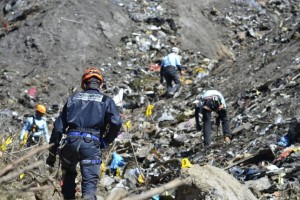
Germanwings Co-pilot’s Profile Becomes Increasingly Disturbing

BERLIN, GERMANY, April 6, 2015 — The profile that has emerged of Germanwings co-pilot Andreas Lubitz has become even more troubling.
In the hours after Flight 9525 crashed in the French Alps two weeks ago, Lubitz was regarded as one of 150 victims in an unexplained disaster. Two days later he was the prime suspect of an unfathomable act.
French and German prosecutors have little doubt that the 27-year-old intentionally slammed the Airbus A320 into a mountain, killing everyone on board, and there is growing evidence that his actions were the result of days of planning.
The revelations have raised questions about who knew what, when, and whether Lubitz could have been stopped.
The crash has prompted particular soul-searching in Germany. Seventy-two of those killed were German citizens, the worst air disaster in the nation’s history since the Concorde crash of 2000, in which 97 Germans died.
Investigators have pieced together a picture of Lubitz by analyzing the voice and flight data recorders found at the crash site, searching his homes in Duesseldorf and Montabaur, and by interviewing friends, relatives, colleagues and doctors.
So far, this is what they have communicated about their findings:
[one_fourth]
[/one_fourth][three_fourth_last]
—Medical records show that before he received his pilot’s license, Lubitz suffered from depression, with doctors recording “suicidal tendencies.” It forced him to take a break of several months from his pilot training. Lufthansa has said Lubitz informed their flight school when he returned in 2009 that he had experienced an episode of “severe depression.” But Germanwings, the Lufthansa subsidiary Lubitz joined in 2013, said it was unaware of this. But both airlines say Lubitz passed all medical tests and was cleared by doctors as fit to fly.
—In the months before the crash Lubitz sought help from several doctors, including specialists at Duesseldorf’s University Hospital. The hospital declined to confirm reports that Lubitz was experiencing vision problems, but said he had come in for tests. Duesseldorf prosecutors say there was no evidence the co-pilot had any physical ailments.
—In the week leading up to the crash Lubitz spent time online researching suicide methods and cockpit door security. Safety rules introduced after the Sept. 11, 2001, terror attacks in the United States allow someone in the cockpit to deny others entry.
—Shortly after takeoff from Barcelona on March 24, Lubitz offered to take over the controls while the pilot went to the toilet. Finding himself unable to enter the cockpit on his return, the pilot pleaded with Lubitz to let him back in. Lubitz ignored him and repeatedly accelerated the plane before it slammed into a mountainside near the village of Le Vernet.
Meanwhile, Germany’s airlines swiftly mandated that two people have to remain in the cockpit at all times, while politicians debated the need to relax patient privacy rules — prompting a swift rebuke from medical associations who warned that rash changes to the rules could undermine patients’ confidence in doctors and prevent them from seeking help, doing greater harm than good.





